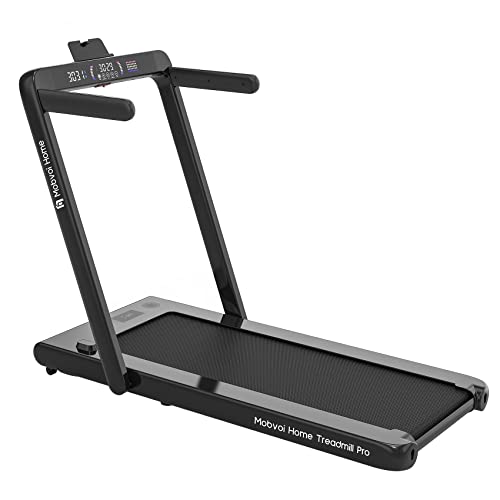Why Gym Treadmill Will Be Your Next Big Obsession
Treadmills: A Comprehensive Guide to Understanding Their Functionality, Benefits, and Appropriate Selection
Intro
Treadmills have ended up being a staple in modern physical fitness regimens, both in homes and gyms worldwide. They provide a convenient and efficient method to maintain cardiovascular health, boost endurance, and assist in weight management. This short article checks out the various kinds of treadmills, their benefits, features to think about when buying, and some FAQs to assist users in making notified choices.
Kinds of Treadmills
When it comes to selecting a treadmill, it is crucial to comprehend the different types readily available in the market. Here are the main categories:
1. Manual Treadmills
- Mechanism: These treadmills have a basic style and depend on the user's efforts to move the belt.
- Pros: More economical, quieter operation, no electrical power required.
- Cons: Limited functions, might not supply the very same variety of workout strength.
2. Motorized Treadmills
- Mechanism: Powered by a motor that drives the belt, enabling users to stroll or run at a set rate.
- Pros: Greater variety of speeds and slopes, equipped with numerous functions such as heart rate monitors and workout programs.
- Cons: More pricey and might need more upkeep.
3. Folding Treadmills
- Mechanism: Designed for those with restricted space, these treadmills can be folded for simple storage.
- Pros: Space-saving, often motorized, versatile functions.
- Cons: May be less durable than non-folding models.
4. Commercial Treadmills
- Mechanism: High-quality machines developed for use in gyms and gym.
- Pros: Built to hold up against heavy usage, advanced functions, often include guarantees.
- Cons: Pricey and not perfect for home use due to size.
5. Curved Treadmills
- Mechanism: An unique style that allows users to propel the belt utilizing their own energy.
- Pros: Offers a more natural running experience, promotes better running type.
- Cons: More pricey and can be noisier.
Treadmill Type
Pros
Cons
Handbook
Budget friendly, no electrical power required
Restricted features
Motorized
Range of speeds, advanced functions
Maintenance required
Folding
Space-saving, frequently motorized
May lack sturdiness
Business
Developed to last, professional-grade functions
Pricey
Curved
Natural running experience, promotes great form
Greater rate
Advantages of Using Treadmills
Treadmills offer many benefits that can add to one's total health and fitness goals. Some of these benefits consist of:
- Convenient Workouts: Treadmills enable users to work out indoors despite weather.
- Cardiovascular Health: Regular usage can enhance heart health by increasing endurance and promoting healthy flow.
- Weight Management: Effective for burning calories, which aids in weight loss and management.
- Personalized Workouts: Users can manage speed, slope, and duration to develop customized workout experiences.
- Safety: Treadmills offer a predictable surface area, minimizing the risk of falls compared to outside running.
- Multifunctional: Many treadmills included features like heart rate monitors, workout programs, and even entertainment systems.
Selecting the Right Treadmill
When picking a treadmill, prospective purchasers must think about a number of key factors:
Features to Consider:
- Motor Power: Typically determined in horse power (HP), a motor strength of a minimum of 2.5 HP is recommended for major runners.
- Belt Size: A longer and larger belt accommodates various stride lengths, supplying comfort throughout exercises.
- Slope Settings: Adjustable slope features simulate outside hill running and can increase exercise strength.
- Weight Capacity: Ensure the treadmill can support the user's weight for safety and longevity.
- Console Features: Look for user-friendly dashboards, exercise programs, and Bluetooth compatibility for streaming music or other functions.
Budget plan Considerations
- Under ₤ 500: Entry-level manual treadmills appropriate for casual walkers.
- ₤ 500 – ₤ 1,500: Mid-range motorized treadmills that offer more functions and better sturdiness.
- ₤ 1,500 – ₤ 3,000: High-end models with sophisticated technology, larger motors, and longer service warranties.
- Over ₤ 3,000: Commercial-grade treadmills perfect for frequent use in gyms or training centers.
Frequently Asked Questions (FAQs)
1. How often should I use a treadmill?
It is advised to use a treadmill at least 3 to five times a week, including different strength levels for best results.
2. Can I reduce weight by utilizing a treadmill?
Yes, constant use of a treadmill can add to weight reduction, particularly when combined with a balanced diet and strength training.
3. What is the very best speed to walk on a treadmill for beginners?
A speed of 3 to 4 miles per hour is a suitable variety for beginners. It's important to start slow and slowly increase rate as comfort and endurance improve.
4. Do check out here need to use a treadmill if I already run outdoors?
Using a treadmill can provide extra benefits, such as controlled environments and varied workouts (slope, periods) that are not always possible outdoors.
5. How do I preserve my treadmill?
Regular upkeep consists of oiling the belt, cleaning the deck and console, and examining the motor for ideal performance.
Treadmills are necessary tools for those looking to boost their fitness levels in a regulated and practical manner. With different types available, understanding their functions and advantages is essential for making an informed purchase. By thinking about individual workout needs, space availability, and spending plan restrictions, individuals can discover the most appropriate treadmill that fits their lifestyle. Incorporating treadmill exercises into a well balanced physical fitness regimen can result in enhanced health outcomes and a pleasurable exercise experience.
